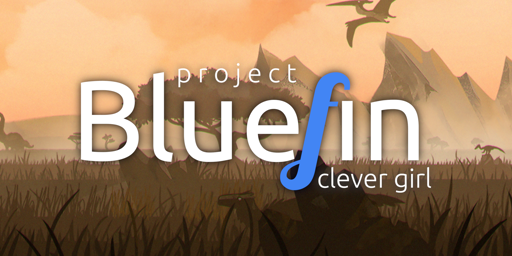After getting a new laptop with win 11 installed, and having to run all the tweaks to make it less obnoxious and disable all the annoyances, I started getting adds pop up in the corner after an update and decided enough was enough. I was forced to pay for that shit and it’s serving me ads? Fuck off.
So I just installed Bluefin and it’s been absolutely awesome. The things they have set up by default are pretty wonderful. Gnome is up with useful extentions to start with so I didn’t have to bother tweaking it to my liking. There is also a KDE based version called Aurora, and the famous gaming spin called Bazzite has both KDE and Gnome versions. There is even a command that lets you easily switch between all the different ublue flavors.
It’s an immutible distro, so it has a base you can’t easily change, but it relies on flatpaks, appimages, homebrew, podman/docker, and distrobox for all the user apps you want, all set up to work by default. The gnome software center is populated by flatpaks, for example. Almost all of the sensible default apps are flatpaks that you can easily uninstall if you don’t want them. And it keeps all of this up-to-date in the background, it checks weekly, and you just restart when convenient to upgrade. The last successful linux distro I installed and stuck with was debian with flatpaks, so I could have a stable base with more up-to-date apps, so it’s a paradigm I like.
There is no traditional package manager unless you install one via distrobox, but flatpak and homebrew cover almost everything most people could want, really.
Want to install jellyfin media server or the ARR stack? Just open up podman-desktop and look for a docker images and then follow a set up guide. Want some command line bling? They have a custom command that installs a bunch of useful terminal apps from homebrew. The bluefin team basically listens to the userbase and then adds whatever they ask for by default if they can get it working, which includes a lot of peripheral support. The results are fantastic.
Previously I was messing around with NixOS, and I like how that works, but I quickly ran out of time to set up my own computer and kind of lost steam messing with it. The ublue distros offer similar functionality: you can create your own custom setup and make it wasy to clone, but you don’t have to bother with that to get a usable experience. It’s usable by default.
It doesn’t support dual booting, because they are a small team and don’t want to have to do tech support whenver windows screws up the boot manager, so if you want to install it and don’t want to wipe your windows install you’ll need a install on a seperate drive (an external drive works) and switch between installs when you boot up. It’s a little more annoying, but it’s a cleaner way to do things.
I’ve never had a linux install be this trouble free and sensibly set up by default. I’m very impressed and would recommend to anyone thinking of switching.




Bazzite works pretty well and the ublue ecosystem is pretty cool, but there are unfortunately sometimes “decision-making strategies” you must employ. As an example, say you want to install
yt-dlp. What’s the best path?That said, I’m using Bazzite on my Steam Deck in particular because it allows me to have full disk encryption, which is mandatory for me because I use it as a generic computer and not just as a steam appliance. And also because with Bazzite the maintenance I personally have to do for it is about as minimal as SteamOS.
For ublue they want you to use brew for cli apps, so yeah, you would be stuck with a copy of python you may not want. They want all user apps be containerized for security and stability.
Or for yt-dlp you could always try a gui flatpak.
https://flathub.org/apps/io.github.mhogomchungu.media-downloader
https://flathub.org/apps/com.github.unrud.VideoDownloader
So, yeah, if you have limited space it’s an issue. I installed a debian distrobox for one app, and it downloaded 1-2 gigs worth of files to set that up. Overkill, sure, but it works.
But distrobox is something I see recommended all the time, and with ublue it’s set up and works by default. You don’t have to follow a guide which may or may not work, and then have to troubleshoot permissions or realize you’re on a newer version of the OS than the guide was written for and something changed and try to manually undo the changes you made and start again, which is something I’ve experienced on linux multiple times.
The best part about ublue is how little time you have to spend troubleshooting stuff. I thought the “immutability” aspect would be limiting, but so far it only limits the amount of time I’ve had to spend trying to get shit to work right. If you are comfortable installing cli apps or using the terminal for package management, it’s not really much of a difficulty spike to start using brew or distrobox or devcontainers.
The downside is it uses more hd space and containerization sometimes breaks the usefulness of certain apps without having to muck about with permissions in flatseal or something, but to me it seems very much worth it.